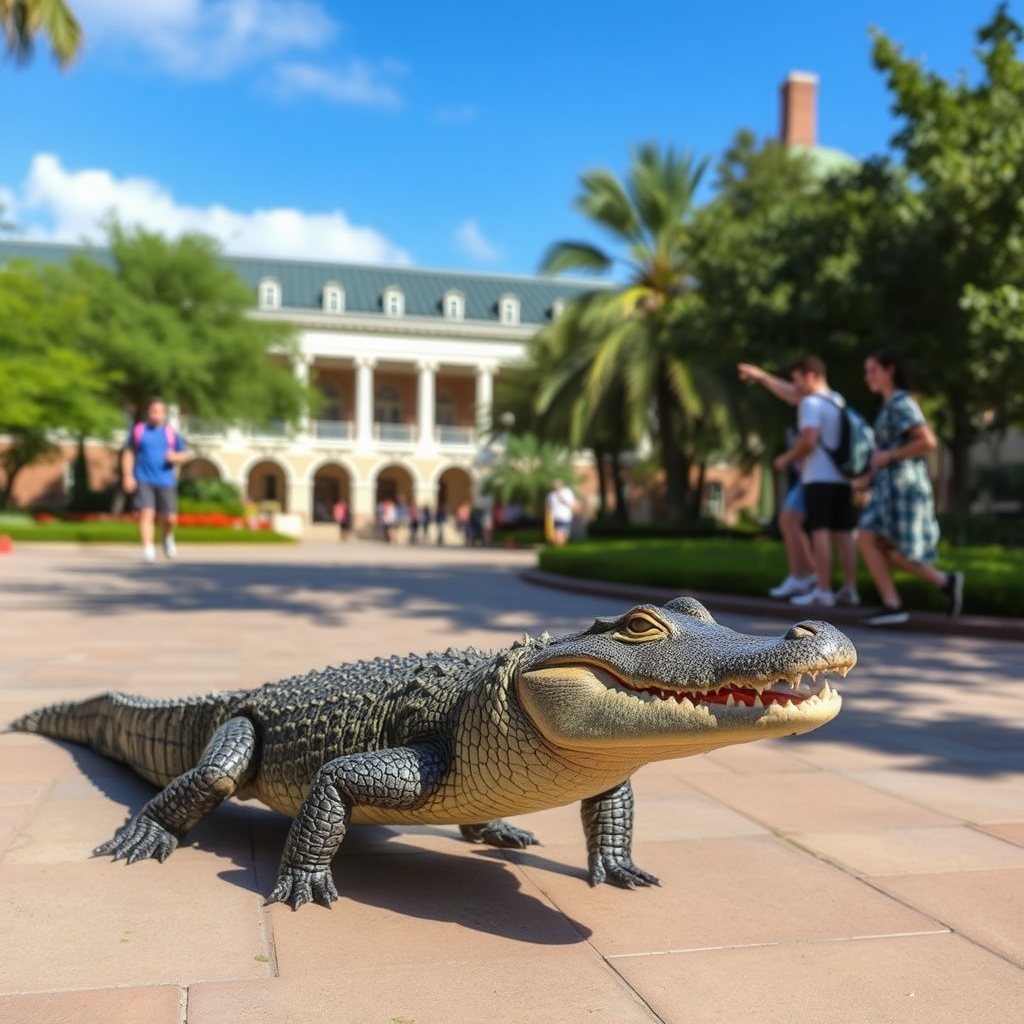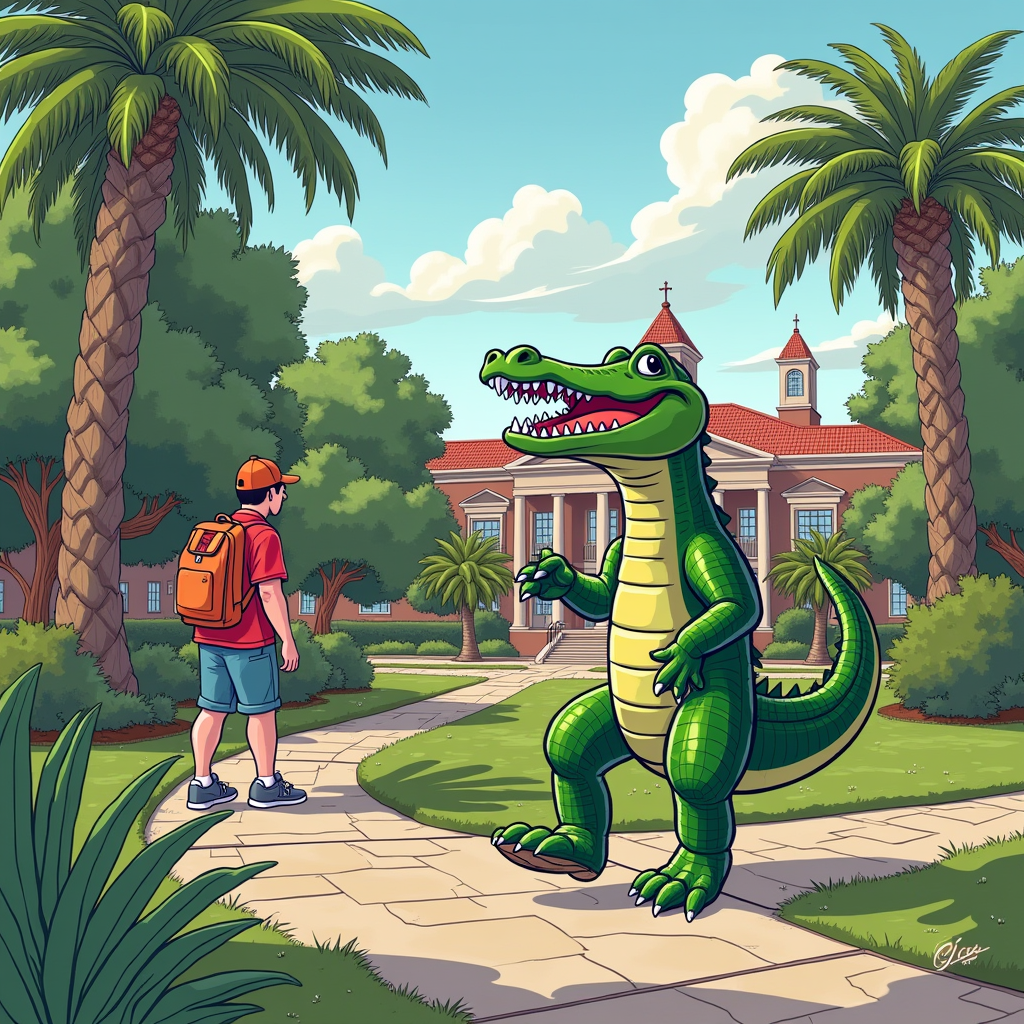Image Generation
The Image Generation API toolkit provides intuitive endpoints for utilizing advanced models that specialize in creating images from textual prompts. These image generation models have been trained on extensive datasets, allowing them to interpret a variety of inputs such as descriptive phrases and complex image requests. Through these endpoints, users can generate a diverse array of images, including photorealistic visuals, stylized illustrations, and custom artworks. This makes the toolkit an invaluable resource for artists, designers, marketers, and developers looking to enhance their applications with innovative image creation capabilities.
Quickstart
To generate text you can use the chat completion endpoint from the REST API, there are several examples below. You can use the REST API from any HTTP client of your choice, or you can use any OpenAI compatible SDK's from any programming of your choice.
- curl
- python
- javascript
curl -X POST https://api.ai.it.ufl.edu/v1/images/generations \
-H "Content-Type: application/json" \
-H "Authorization: Bearer $NAVIGATOR_TOOLKIT_API_KEY" \
-d '{
"model": "flux.1-dev",
"prompt": "An Alligator walking around the University of Florida saying hi to students.",
"n": 1,
"size": "1024x1024",
"quality": "standard",
"response_format": "b64_json"
}'
from openai import OpenAI
client = OpenAI(
api_key="$NAVIGATOR_TOOLKIT_API_KEY",
base_url="https://api.ai.it.ufl.edu/v1"
)
response = client.images.generate(
model="flux.1-dev",
prompt="An Alligator walking around the University of Florida saying hi to students.",
size="1024x1024",
quality="standard",
n=1,
response_format="url"
)
image_url = response.data[0].url
import OpenAI from 'openai';
const openai = new OpenAI({
apiKey: '$NAVIGATOR_TOOLKIT_API_KEY',
baseURL: 'https://api.ai.it.ufl.edu/v1'
});
const completion = await openai.images.generate({
model: "flux.1-dev",
prompt: "An Alligator walking around the University of Florida saying hi to students.",
n: 1,
size: "1024x1024",
quality: "standard",
response_format: "url",
});
image_url = response.data[0].url;
Choosing a Model
When making an image generation request, the first option to configure is which model you want to use. The model you select can significantly impact the output quality, processing cost, and overall performance of each generation request.
- Larger, advanced models typically deliver higher fidelity and more realistic images while having a higher computational expense and potentially longer processing times.
- Smaller, more compact models might not achieve the same level of detail as their larger counterparts, but they generally offer quicker responses and can be more cost-effective for specific tasks or simpler image requests.
- Specialized models are often designed for certain image types or styles, such as artistic renderings or photorealistic portraits. While these models may require longer processing times and generate more complex outputs, they excel in their specific focus areas.
It's advisable to experiment with different image generation models to determine which one best suits your specific prompts and objectives. Take into account factors such as the complexity of your visual task, required rendering speed, budget constraints, and the level of detail or creativity you need in the generated images.
For further guidance on selecting the right model for your image generation needs, be sure to refer to the NaviGator AI model documentation and guidelines provided by the AI service you are utilizing.
Building a Prompt
Creating effective prompts for AI image generation models is essential for producing high-quality visuals that align with your creative vision. This documentation outlines best practices, key elements, and methodologies for crafting prompts that maximize the potential of image generation AI models.
Understanding AI Image Generation Models
AI image generation models leverage advanced algorithms trained on large datasets to create images based on the prompts provided. These models interpret the input and generate visuals that can range from photorealistic images to artistic representations.
Key Components of Effective Prompts
-
Clarity and Specificity:
- Clearly outline the main subject of the image. Be as specific as possible to avoid ambiguity.
- Example: Instead of saying "a cat," specify "a playful white Siamese cat laying on a sunny windowsill."
-
Descriptive Language:
- Use vivid and descriptive adjectives to convey the mood, color palette, and style you want in the image.
- Example: "A serene sunset over a calm lake, with golden light reflecting off the water, surrounded by lush greenery."
-
Contextual Elements:
- Include background settings or actions that complement the primary subject.
- Example: "A young artist painting on an easel in a colorful studio filled with canvases and brushes, sunlight streaming through the window."
-
Artistic Style:
- Specify the desired art style, such as realism, impressionism, or abstract, to guide the aesthetic of the generated image.
- Example: "Create an abstract representation of a bustling cityscape at night, filled with colorful lights and dynamic shapes."
-
Image Complexity:
- Consider the complexity of the scene. A more intricate description can lead to more detailed outputs, while simpler prompts may result in basic visuals.
- Example: Complex: "A dragon soaring through a stormy sky with thunderclouds swirling around it." Simple: "A dragon flying."
Example Structures for Prompts
-
Descriptive Prompt:
- "A cozy coffee shop during a rainy day, with people reading and the aroma of fresh coffee in the air."
-
Comparative Prompt:
- "A landscape blending the styles of Monet's Water Lilies and a modern city skyline at dawn."
-
Scenario-Based Prompt:
- "An astronaut exploring a colorful alien planet with unusual rock formations and vibrant vegetation."
-
Style-Specific Prompt:
- "A portrait in the style of Vincent van Gogh, featuring swirling patterns and bold brush strokes."
Advanced Techniques for Prompt Crafting
-
Experimentation:
- Test different prompts and tweak elements to understand how variations affect the generated images. This iterative process can reveal the most effective phrasing and details.
-
Incorporating References:
- Use reference images along with your prompts to provide visual context. Ensure that you have the rights to use any reference images you include.
-
Using Tools:
- Leverage tools like Phot.AI to extract prompts from existing images or explore community-driven platforms for inspiration and guidance.
Considerations for Ethical Usage
When generating images, consider the rights associated with the content produced. Ensure that your prompts do not lead to the generation of inappropriate or harmful images and respect copyright when using reference materials.
Conclusion
Mastering the art of prompt crafting is key to unleashing the full potential of AI image generation models. By following the guidelines and techniques outlined in this documentation, you can create tailored prompts that yield stunning and meaningful visuals, enhancing your creative projects across various domains.

